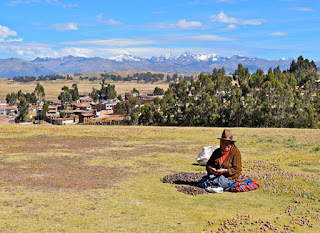why people resort to violence to uphold an identity?
The article “Female Perpetrators of the Rwandan Genocide” explores the role of women in the Rwandan Genocide as perpetrators of violence. This is a transition from the primary portrayal of women as the victims of violence during the Genocide. While Brown acknowledges the abuses faces by women during the conflict, she focuses on the narrative of women who participated in the violence. The three main focuses of this article are the process of gender-specific mobilization during the Genocide, the actual experiences of agency through direct and indirect violence, and the resulting aftermath from the conflict.
This article addresses the engendered narratives of conflict and violence. There is an evident disconnect between the representation of males and females in conflict. Historically, this has been analyzed through the terms used to describe women and men during disputes. The codification of “women and children” in particular has been criticized for the narratives it plays into related to female gentleness, innocence, and vulnerability. Brown addresses this disconnect in representation when explaining why female perpetrators of the Rwandan Genocide have been mainly ignored. She depicts this as the ”result of Rwanda’s inability to understand how mothers “became murderers” going on to elaborate that the “sacredness of motherhood and female passivity is still real in their function and application in Rwandan society, despite the country’s tremendous success in the area of gender equality” (Brown 451).
Brown’s revelations regarding the mobilization of women during conflicts relate to the broader question of why people resort to violence to uphold an identity? Gender does not constitute an entirely equitable identity in Rwanda due to the presence of a patriarchal system. Women have restricted agency beyond traditional household roles. Further complicating the portrayal of identity is the added variable of ethnic considerations in Rwanda. Brown explains the dynamics of these identities resulted in an interlinking grid characterizing Hutu and Tutsi men and women.
Since Rwandan women faced such limited mobility in society, Brown describes violence as a way “women exercised a limited form of agency, operating within a deeply entrenched patriarchal system” (450). While limited mobility cannot be declared the only reason for their actions, it is recognized that these women were able to operate beyond their traditional confining roles through violent participation. This is consistent with further analysis describing ethnic conflicts in which one party felt particularly politically powerless. The Shining Path terrorist group in Peru was able to recruit so successfully among lower-income, ethnically concentrated populations in remote terrain due to the lack of alternatives available to this group. Young men in mountainous Peruvian terrain, living in financially vulnerable agricultural villages, have explained that they were more inclined to join the terrorist group as they knew it was the only feasible way to change their situation. The absence or supposed lack of more peaceful options represents a driving force here, explaining why people resort to violence to uphold an identity.
Brown, Sara E. 2014. “Female Perpetrators of the Rwandan Genocide.” In-
ternational Feminist Journal of Politics 16(3): 448-469.




Your example with the Shining Path is useful and you say that the reason that recruitment occurred was because individuals were disadvantaged. Was it just ethnic or socioeconomic disadvantage that caused people to become supportive of the movement? Or did people need to be activated in order to act on their disadvantage by rhetoric from the terrorist group that played up or directly identified disadvantage as resulting from the dominant group? That is, is deprivation enough or does there need to be more active recruitment of disadvantaged individuals?
ReplyDelete